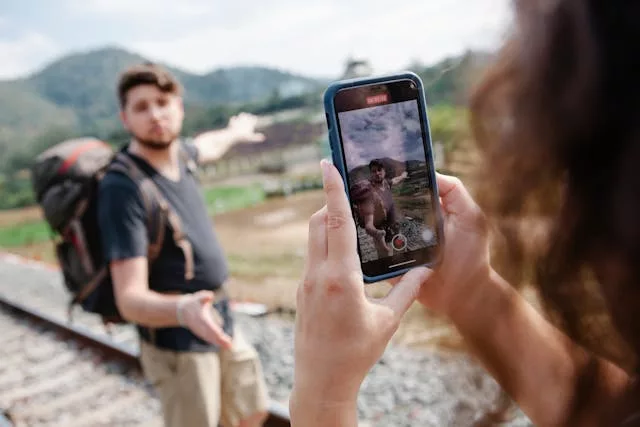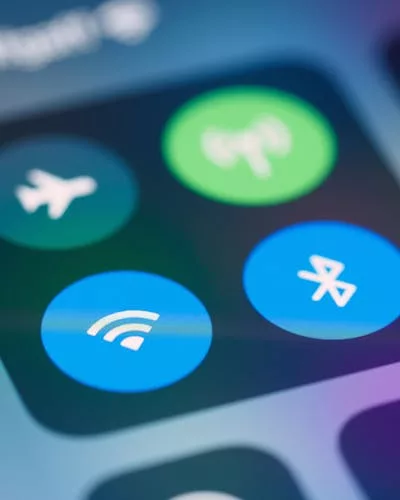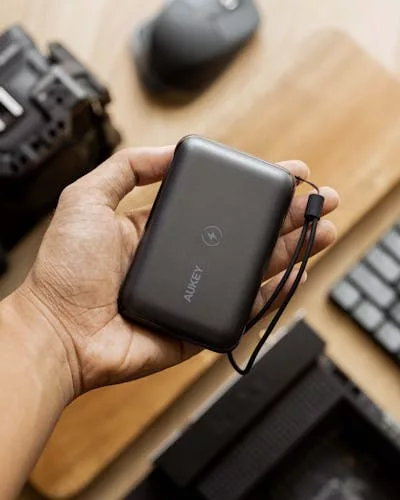
There’s nothing worse than reaching the summit, pulling out your phone to snap a photo—or check your trail app—and seeing the dreaded red battery bar. Whether you’re using your phone for navigation, emergency contact, or capturing the views, keeping it charged on the trail is essential. Luckily, with a few smart tweaks, you can extend your phone’s battery life and stay connected (or at least photo-ready) all hike long.
Here are 11 easy and effective ways showing how to save your phone battery when hiking.
Prepare Your Phone Before the Hike
Before you even lace up your boots, prep your phone to conserve energy.
- Charge it fully the night before
- Close any unused apps running in the background
- Turn off auto-sync and background app refresh
- Download offline maps for your route (like on AllTrails, Gaia GPS, or Google Maps)
- If you know you won’t have reception, put your phone in airplane mode right away
This pre-hike routine alone can add hours to your battery life.
Use Battery Saver or Low Power Mode
Modern smartphones come with built-in battery-saving modes. On iPhones, it’s called Low Power Mode, and on Android, you’ll find Battery Saver.
These modes automatically reduce screen brightness, slow down background processes, and disable features like mail fetching or app refresh. Enable it before you even hit the trail to squeeze the most out of your battery.
Turn Off Battery-Hungry Features
A lot of features keep running in the background even when you’re not using your phone. Disable these before heading out:
- Bluetooth (unless using a paired device like earbuds or a smartwatch)
- Wi-Fi (unless you’re hiking in an area with service and need it)
- Mobile Data (if not expecting to get signal)
- Location Services (only keep on for essential apps like maps)
- Reduce Screen Brightness or turn on Auto-Brightness
Every little bit helps, especially on longer hikes.
Use Airplane Mode Wisely
When you’re in areas with no signal, your phone burns battery trying to connect to a cell tower. That constant search drains power fast.
Put your phone in airplane mode when you know you won’t need to make calls or use mobile data. Bonus: GPS still works on most phones in airplane mode, so you can still use offline maps without draining your battery.

Be Smart with Photos and Videos
It’s tempting to capture every stunning view, but your camera is one of the biggest battery hogs.
- Skip unnecessary videos or high-resolution bursts
- Take quick snaps and close the camera app right away
- Avoid editing or posting on the trail—save that for later
- For serious photo lovers, consider carrying a lightweight camera to reduce phone use
Limit App Usage
Scrolling Instagram or checking email mid-hike? Not only is it distracting, but it also drains your phone fast. You’re hiking to enjoy nature and get away from the hustle and bustle of life.
- Stick to essential apps only (like maps or weather)
- Close each app fully when you’re done
- Avoid social media, games, or any app that refreshes content often
The fewer apps you use, the longer your battery lasts.
Manage GPS Usage
GPS is a helpful tool on the trail, but it’s another battery killer if used continuously. Learning to use a paper map and compass can help save your phone battery. I have a guide here.
- Download your trail ahead of time to avoid using live tracking
- Check your location only when needed instead of constant monitoring
- Use a dedicated GPS device for long or technical hikes if possible
Pro tip: apps like Gaia GPS and AllTrails offer offline tracking that uses less battery than full-on GPS navigation.
Carry a Power Bank or Charging Case
A portable power source is a game-changer, especially for longer hikes.
- Look for a 10,000mAh power bank (good for 2–3 full charges)
- Choose lightweight, rugged models for hiking
- Bring a short, fast-charging cable to avoid cable mess in your pack
- Charging phone in short bursts (10–15%) is usually more efficient than draining it fully
A slim, high-quality power bank is worth the investment for peace of mind.

Turn Your Phone Off When Not in Use
If you’re only using your phone for emergencies or occasional trail checks, power it down entirely.
- A powered-off phone drains almost no battery
- You can still turn it on quickly when needed
- Great for multi-hour hikes in remote areas where signal and usage are minimal
This tip can be a huge lifesaver if you forget a power bank or start with a half-charged battery.
Lock Your Screen to Prevent Accidental Battery Drain
Believe it or not, a lot of battery life is lost from accidental screen activity—especially when your phone is bouncing around in a pocket or pack.
- Always lock your screen before storing it
- Set your phone’s screen timeout to 15–30 seconds
- Use a quick-access method like fingerprint or Face ID
- Store your phone in a secure, padded pocket or a dry bag to prevent pressure triggers
A locked screen saves your battery and prevents unintended calls, camera use, or app activity.
Bonus Tips to Stretch Your Battery Even Further
- Download music or podcasts ahead of time and play them in airplane mode
- Use a dedicated GPS device or e-reader for maps or trail guides
- In cold weather, keep your phone in an inner pocket to protect it from battery-draining temps. Here is information in Lithium-ion batteries that will help you understand how to preserve their lifespan.
- Carry a spare phone if you rely on tech for navigation and safety
My Final Thoughts
With a little preparation and a few small changes, you can make your phone battery last all day—or even multiple days—on the trail. Whether you’re hiking for an hour or heading into the backcountry, these battery-saving strategies help keep your phone ready for whatever the adventure brings.
Have a battery-saving trick of your own? Share it in the comments—I’d love to hear it!
